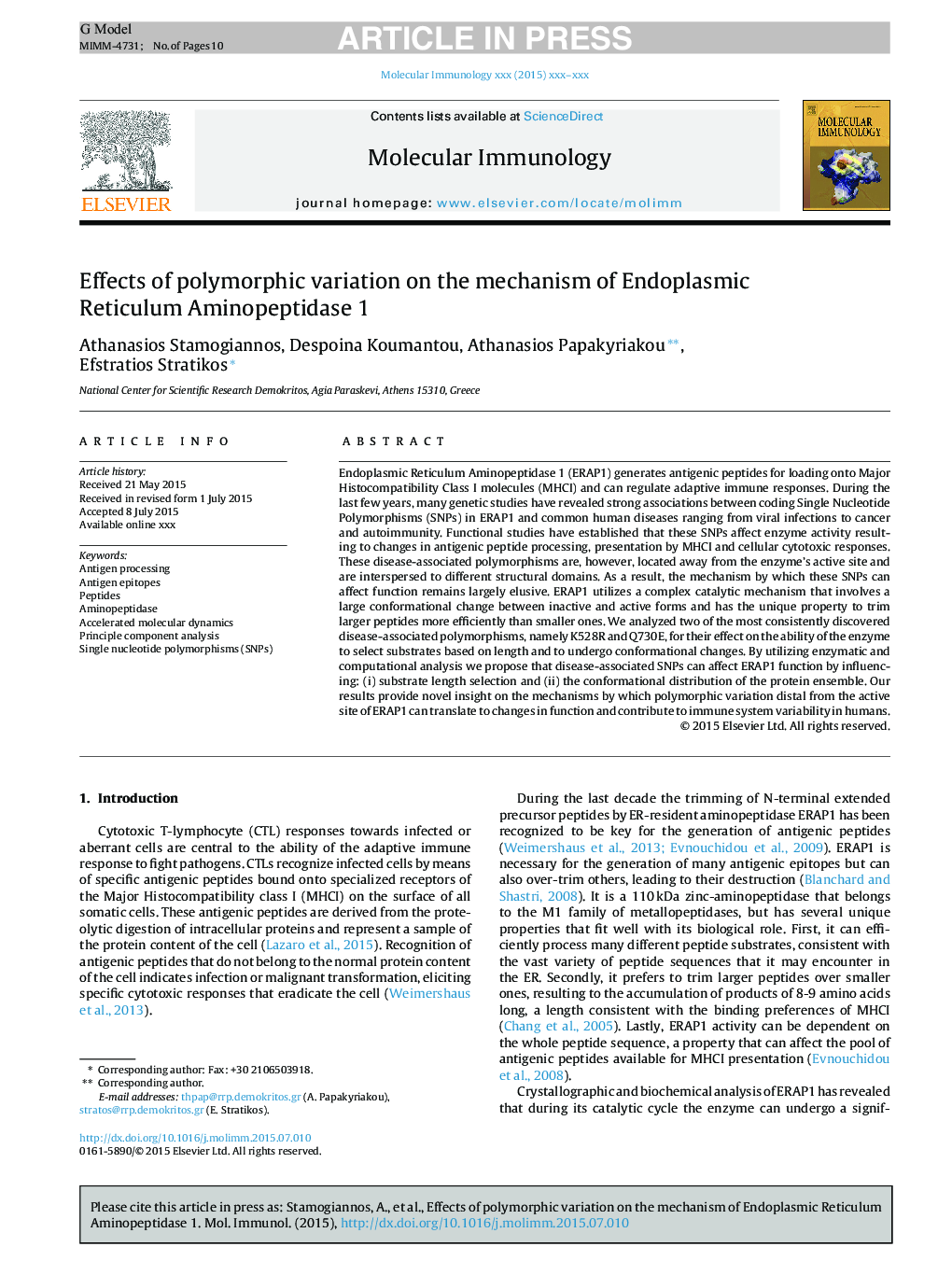| Article ID | Journal | Published Year | Pages | File Type |
|---|---|---|---|---|
| 5916670 | Molecular Immunology | 2015 | 10 Pages |
Abstract
Endoplasmic Reticulum Aminopeptidase 1 (ERAP1) generates antigenic peptides for loading onto Major Histocompatibility Class I molecules (MHCI) and can regulate adaptive immune responses. During the last few years, many genetic studies have revealed strong associations between coding Single Nucleotide Polymorphisms (SNPs) in ERAP1 and common human diseases ranging from viral infections to cancer and autoimmunity. Functional studies have established that these SNPs affect enzyme activity resulting to changes in antigenic peptide processing, presentation by MHCI and cellular cytotoxic responses. These disease-associated polymorphisms are, however, located away from the enzyme's active site and are interspersed to different structural domains. As a result, the mechanism by which these SNPs can affect function remains largely elusive. ERAP1 utilizes a complex catalytic mechanism that involves a large conformational change between inactive and active forms and has the unique property to trim larger peptides more efficiently than smaller ones. We analyzed two of the most consistently discovered disease-associated polymorphisms, namely K528R and Q730E, for their effect on the ability of the enzyme to select substrates based on length and to undergo conformational changes. By utilizing enzymatic and computational analysis we propose that disease-associated SNPs can affect ERAP1 function by influencing: (i) substrate length selection and (ii) the conformational distribution of the protein ensemble. Our results provide novel insight on the mechanisms by which polymorphic variation distal from the active site of ERAP1 can translate to changes in function and contribute to immune system variability in humans.
Keywords
Related Topics
Life Sciences
Biochemistry, Genetics and Molecular Biology
Molecular Biology
Authors
Athanasios Stamogiannos, Despoina Koumantou, Athanasios Papakyriakou, Efstratios Stratikos,
